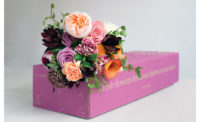E-commerce Trends and Packaging

The pandemic-driven surge in e-commerce sales has resulted in an increased number of packages crossing the threshold of people’s homes — and packaging is a critical component as the e-commerce industry continues to expand at unprecedented rates. Packaging for e-commerce is more than protecting and preserving the product. It starts with a deeper understanding of the consumer lifestyle trends and behaviors, as well as retail shifts that influence and impact the consumer experience.
For the consumer, the distinction continues to blur between brick-and-mortar retail and e-commerce. As consumer reliance on smartphones increases, micro-moments (turning to a device to act on something) impact how consumers shop. According to the Harvard Business Review Analytic Services report on the shopper journey, what starts as a micro-moment often leads to engagement with other channels. Based on comScore’s Local Search Study, most purchases following a mobile search happened not online but in a physical store (73%) or via a phone call (16%). These blurred and changing channels impact packaging, and if the packaging fails, that influences the consumer’s positive, seamless shopping experience and puts brands at risk.
As consumers continue to shop online, their standards have elevated. When it comes to packaging for online shopping, an enjoyable unboxing experience — when consumers receive, open and engage with primary and secondary packaging — can help drive brand loyalty. Retailers such as Dollar Shave Club, Birchbox and Thrive Market are a few retailers who use eye-catching packaging to evoke surprise and delight moments.
The visual appeal of packaging pays off. In a Shorr Packaging survey, half (51%) of respondents said specifically printed or customized packaging made them feel like the product inside was more valuable. With e-commerce, visual engagement occurs differently. Unlike conventional retail, where consumers hold a product as part of the purchase decision process, online consumers only experience a physical product after it arrives at their homes. The product must meet the expectation of the consumer that they formed from viewing the product online.
E-commerce can’t simply replicate in-store packaging strategies; they need to be reviewed and examined. A well-developed e-commerce packaging plan starts with an understanding of consumer behaviors and trends. The holy grail of an e-commerce solution achieves the benefit of product protection, visual appeal and optimization for pack out and shipping efficiency.
To meet the needs of this more competitive, e-commerce driven market, new and innovative packaging designs often require implementing new machinery solutions, according to the Key Challenges for Packaging and Processing Operations white paper from PMMI Business Intelligence, a division of PMMI, The Association for Packaging and Processing Technologies. Given the amount of ongoing change, machine flexibility is key, with rapid changeover times and machines that are future-proofed to handle new materials is an absolute must.
Additionally, the pandemic has accelerated the move to more sustainable packaging choices for e-commerce. These earth-friendly alternatives come in a variety of materials, such as boxes made from 100% post-consumer waste and petroleum-free inks. The 2021 Dotcom Distribution’s eCommerce Consumer study, Reshaping the Post-Pandemic E-Commerce Landscape, revealed that consumers prefer to support sustainably focused brands. In order to meet this consumer focus, PMMI’s white paper highlights the need for end users to work closely with all suppliers, including OEMs, to better understand the supply chain, as well as work with their regulatory teams to better understand upcoming legislative changes surrounding sustainable materials.
Improving partnerships throughout the supply chain can help ensure that machinery is able to handle recyclable and/or biodegradable materials, as well as new, sales-boosting packaging designs that often cause plant inefficiencies. Improved communication and partnerships were often cited as a solution to many of the packaging challenges addressed in PMMI’s white paper.
The best place to find the right e-commerce packaging solutions and forge the necessary partnerships to succeed in this changing marketplace is at PACK EXPO East (March 21-23, 2022; Pennsylvania Convention Center). Registration is now open for this next event in the PACK EXPO portfolio of trade shows, produced by PMMI. Now in its fifth edition, the three-day event returns to Philadelphia after a record-breaking PACK EXPO East 2020 that featured 7,100-plus attendees and its largest show floor to date. Click here to learn about the PACK Ready Health and Safety plan.
Looking for a reprint of this article?
From high-res PDFs to custom plaques, order your copy today!






